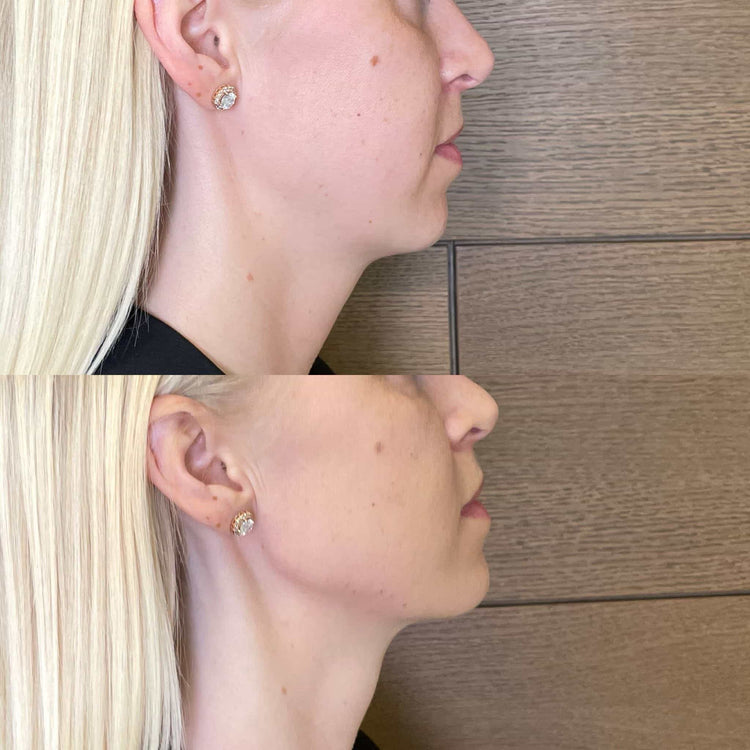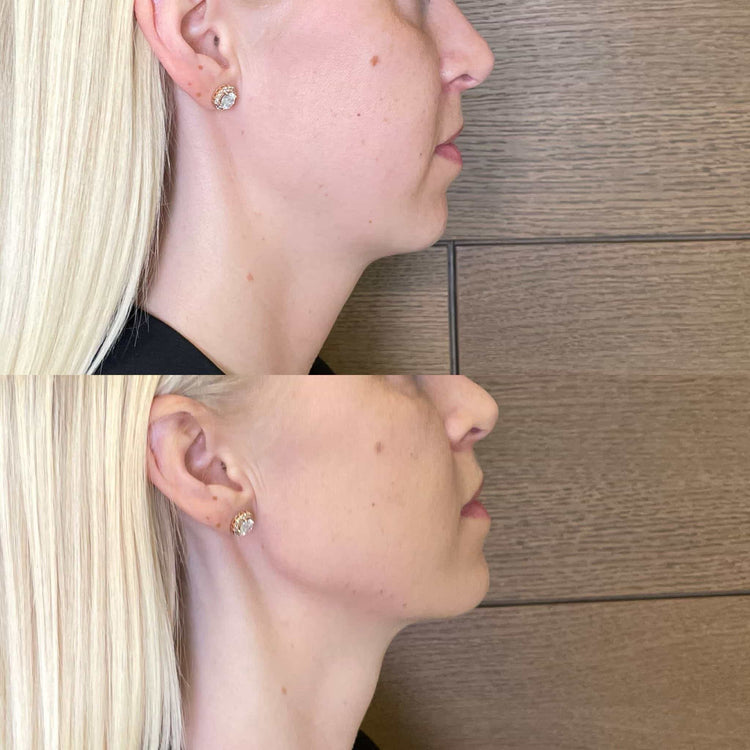Understanding the Cause
Uneven results after jaw filler treatments can be frustrating, but understanding the cause can help manage expectations and potentially address the issue. Several factors can contribute to unevenness, including improper injection technique by the practitioner, varying densities of filler material used, natural asymmetries in facial structure, or even movement and absorption of the filler over time.
Evaluating Fillers Used
Addressing uneven results from jaw filler treatments requires a multi-pronged approach. It’s crucial to first determine the root cause. If improper injection technique is suspected, seeking a consultation with an experienced injector who can revise the placement may be beneficial.
Different fillers have varying densities, which can contribute to unevenness if not chosen appropriately for each area of the jawline. A skilled practitioner will select fillers based on the desired outcome and the individual’s facial structure.
Acknowledging natural asymmetries in facial structure is essential. While aiming for symmetry is important, perfectly even results might not be achievable due to inherent variations between the left and right sides of the face.
Lastly, fillers naturally migrate and absorb over time. This process can lead to subtle shifts in the treated area, necessitating touch-up appointments to maintain desired results.
Reviewing Patient History
## Corrective Options
When reviewing a patient’s history after jaw filler treatments, it’s crucial to consider all potential contributing factors to unevenness.

Inquire about the type and amount of filler used, as well as the injector’s experience level. Ask the patient to describe their desired outcome and any specific areas of concern.
Reviewing photographs taken before and after the treatment can also help identify subtle asymmetries or areas where filler distribution appears uneven.
Dissolving Existing Filler
%h2% Dissolving Existing Filler %h2%
Dissolving existing filler is a possible solution for addressing uneven jaw filler results. Hyaluronic acid fillers, the most common type used for jaw augmentation, can be broken down with an enzyme called hyaluronidase.
This process involves injecting hyaluronidase into the treated area, which causes the hyaluronic acid filler to gradually break down and be absorbed by the body. It’s important to note that dissolving filler is a complex procedure and should only be performed by a qualified and experienced medical professional.
The amount of hyaluronidase required will depend on the volume and type of filler used initially. Multiple injections may be needed to achieve the desired result.
Dissolving filler can help even out uneven areas, but it’s not always a perfect solution. There is always a risk of residual filler or incomplete dissolution, which may require additional treatments.
Strategic Re-injection
Addressing uneven results from jaw filler treatments requires a multi-pronged approach. It’s crucial to first determine the root cause. If improper injection technique is suspected, seeking a consultation with an experienced injector who can revise the placement may be beneficial. Different fillers have varying densities, which can contribute to unevenness if not chosen appropriately for each area of the jawline. A skilled practitioner will select fillers based on the desired outcome and the individual’s facial structure.
Acknowledging natural asymmetries in facial structure is essential. While aiming for symmetry is important, perfectly even results might not be achievable due to inherent variations between the left and right sides of the face. Lastly, fillers naturally migrate and absorb over time. This process can lead to subtle shifts in the treated area, necessitating touch-up appointments to maintain desired results.
When reviewing a patient’s history after jaw filler treatments, it’s crucial to consider all potential contributing factors to unevenness. Inquire about the type and amount of filler used, as well as the injector’s experience level. Ask the patient to describe their desired outcome and any specific areas of concern. Reviewing photographs taken before and after the treatment can also help identify subtle asymmetries or areas where filler distribution appears uneven.
Dissolving existing filler is a possible solution for addressing uneven jaw filler results. Hyaluronic acid fillers, the most common type used for jaw augmentation, can be broken down with an enzyme called hyaluronidase. This process involves injecting hyaluronidase into the treated area, which causes the hyaluronic acid filler to gradually break down and be absorbed by the body. It’s important to note that dissolving filler is a complex procedure and should only be performed by a qualified and experienced medical professional.
The amount of hyaluronidase required will depend on the volume and type of filler used initially. Multiple injections may be needed to achieve the desired result. Dissolving filler can help even out uneven areas, but it’s not always a perfect solution. There is always a risk of residual filler or incomplete dissolution, which may require additional treatments.
Other Treatment Modalities
Other treatment modalities may be considered depending on the severity and nature of the unevenness. These might include using dermal fillers to strategically address specific areas, contouring techniques using fat grafting, or even surgical interventions like a genioplasty (jawbone reshaping) in more extreme cases.
Realistic Outcomes
Understanding that achieving perfectly symmetrical results with jaw filler treatments can be challenging is crucial. Factors like individual facial structures, filler type and density, and the natural migration of fillers over time can contribute to variations.
When addressing unevenness, it’s essential to consult a qualified practitioner who can evaluate the specific situation and recommend the most appropriate course of action. They may suggest revising the placement of the filler, using different types or densities of fillers in certain areas, or exploring options like dissolving existing filler (if applicable) to adjust the contours.
Open communication with the patient about their expectations and desired outcome is paramount. Realistic goals and a clear understanding of potential outcomes can help manage expectations and ensure both patient and practitioner are aligned.
Potential Risks and Side Effects
Dissolving existing filler is a possible solution for addressing uneven jaw filler results. Hyaluronic acid fillers, the most common type used for jaw augmentation, can be broken down with an enzyme called hyaluronidase. This process involves injecting hyaluronidase into the treated area, which causes the hyaluronic acid filler to gradually break down and be absorbed by the body.
It’s important to note that dissolving filler is a complex procedure and should only be performed by a qualified and experienced medical professional. The amount of hyaluronidase required will depend on the volume and type of filler used initially. Multiple injections may be needed to achieve the desired result. Dissolving filler can help even out uneven areas, but it’s not always a perfect solution. There is always a risk of residual filler or incomplete dissolution, which may require additional treatments.
Other treatment modalities may be considered depending on the severity and nature of the unevenness. These might include using dermal fillers to strategically address specific areas, contouring techniques using fat grafting, or even surgical interventions like a genioplasty (jawbone reshaping) in more extreme cases.

Follow-Up Appointments
Follow-up appointments are essential for ensuring optimal results and addressing any concerns that may arise after jaw filler treatments. During these appointments, the practitioner will assess the distribution of the filler, check for any signs of complications such as swelling, bruising, or infection, and discuss any adjustments or touch-ups needed.

The frequency of follow-up appointments depends on various factors, including the individual’s healing process, the type and amount of filler used, and the desired outcome. Typically, patients may have an initial follow-up appointment within a few days after the treatment to monitor for any immediate reactions or issues.
Subsequent follow-ups are usually scheduled several weeks apart as the filler settles and its final effects become more apparent. Touch-up appointments might be necessary to address areas that require additional volume or refine the contours of the jawline.
Consult with Dr. Laura Geige at It’s Me & You Clinic for jaw fillers and a defined jawline
- How To Understand Your Skin’s Aging Process Through A Skincare Consultation - May 22, 2025
- THC Beverages And The Growing Demand For Low-Dose Options - May 22, 2025
- Should I Massage My Marionette Filler? - May 20, 2025
